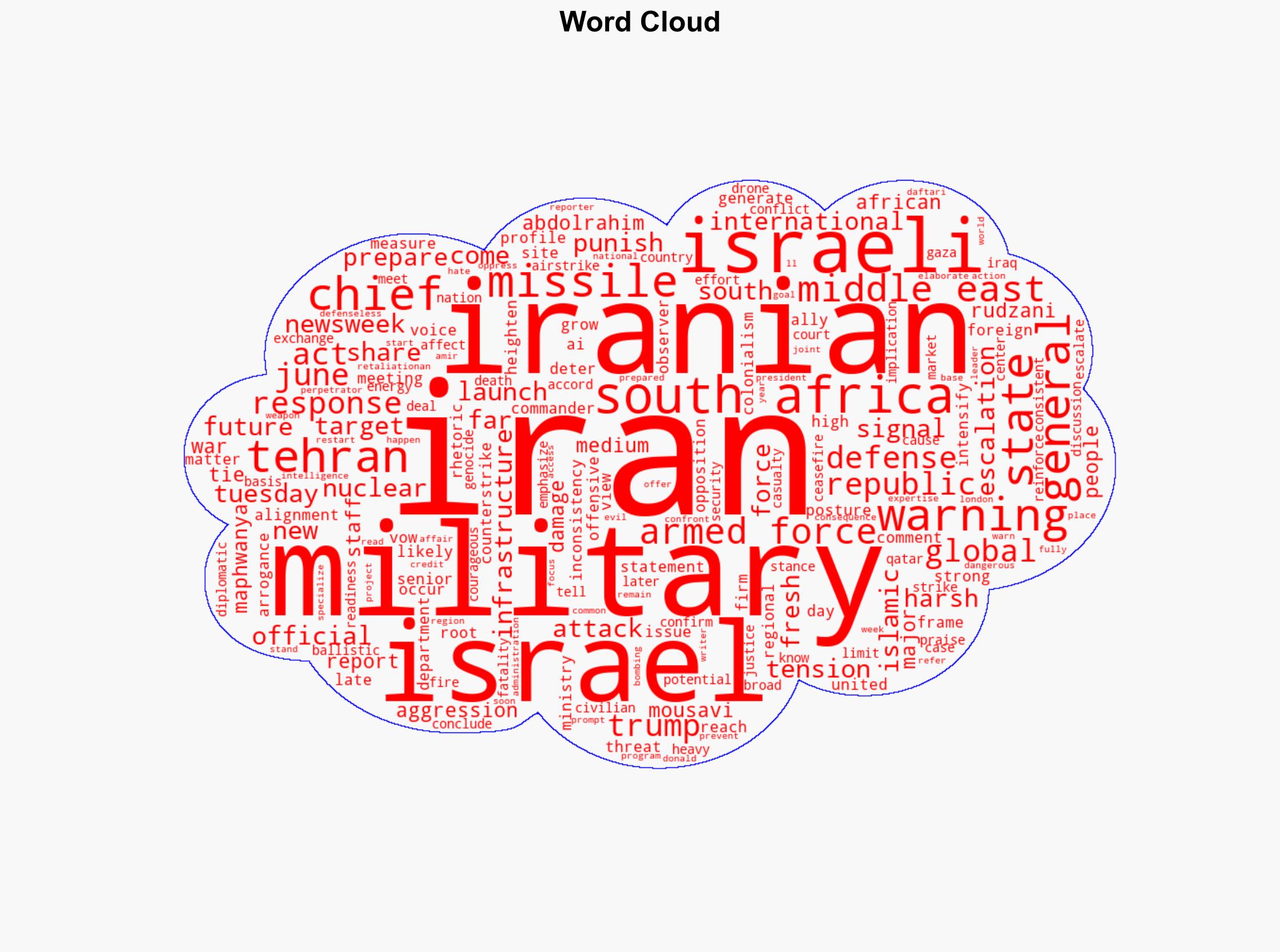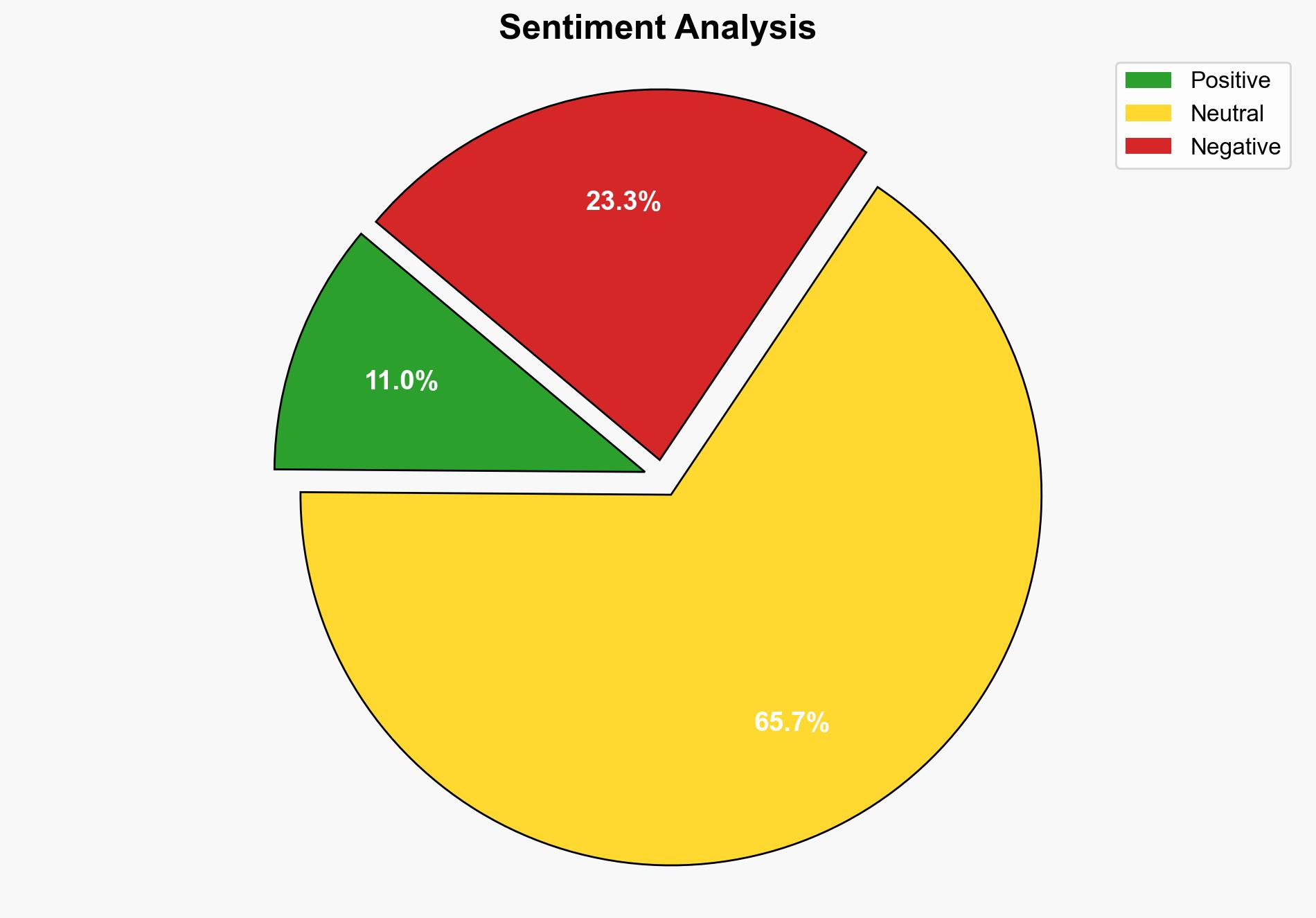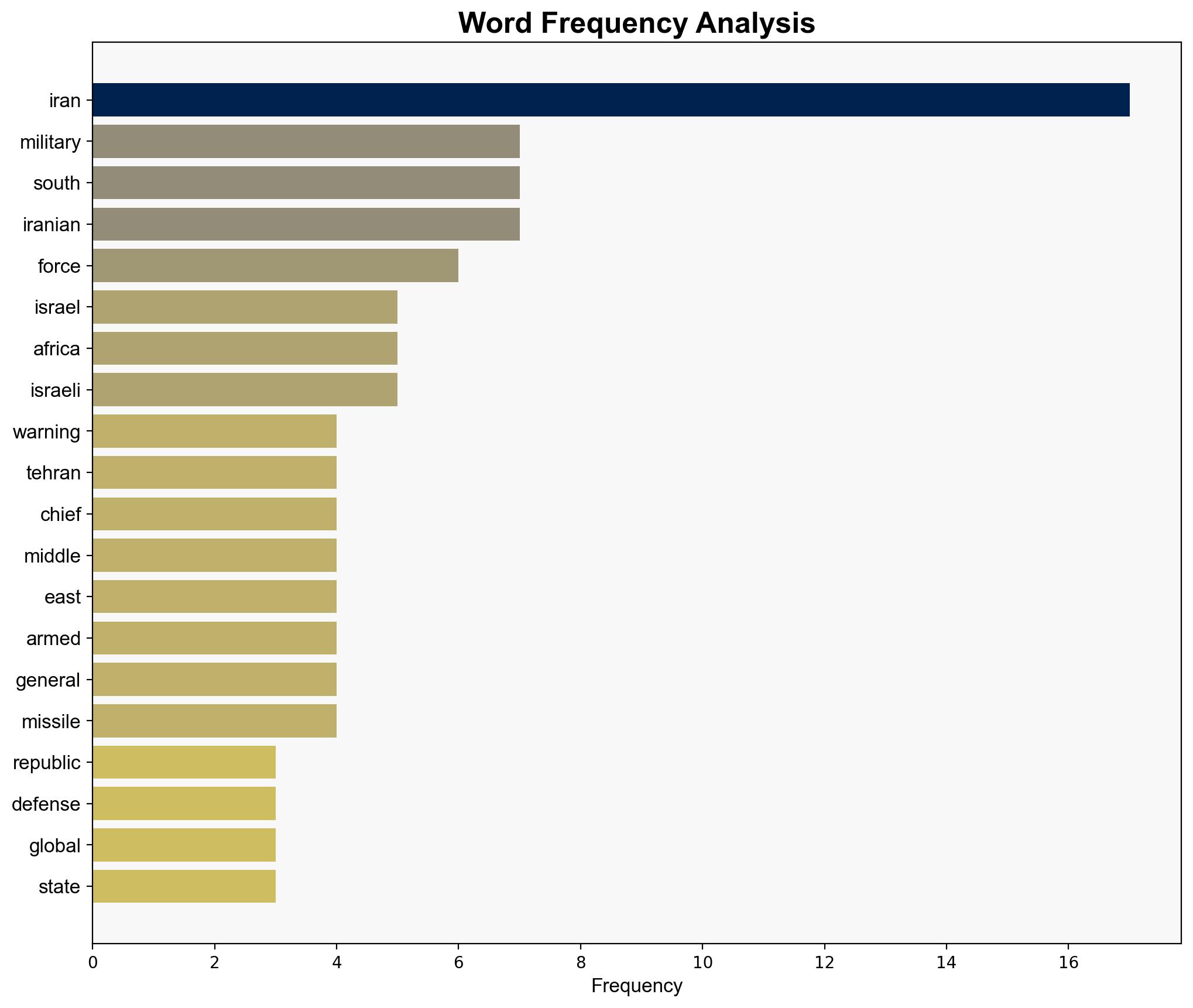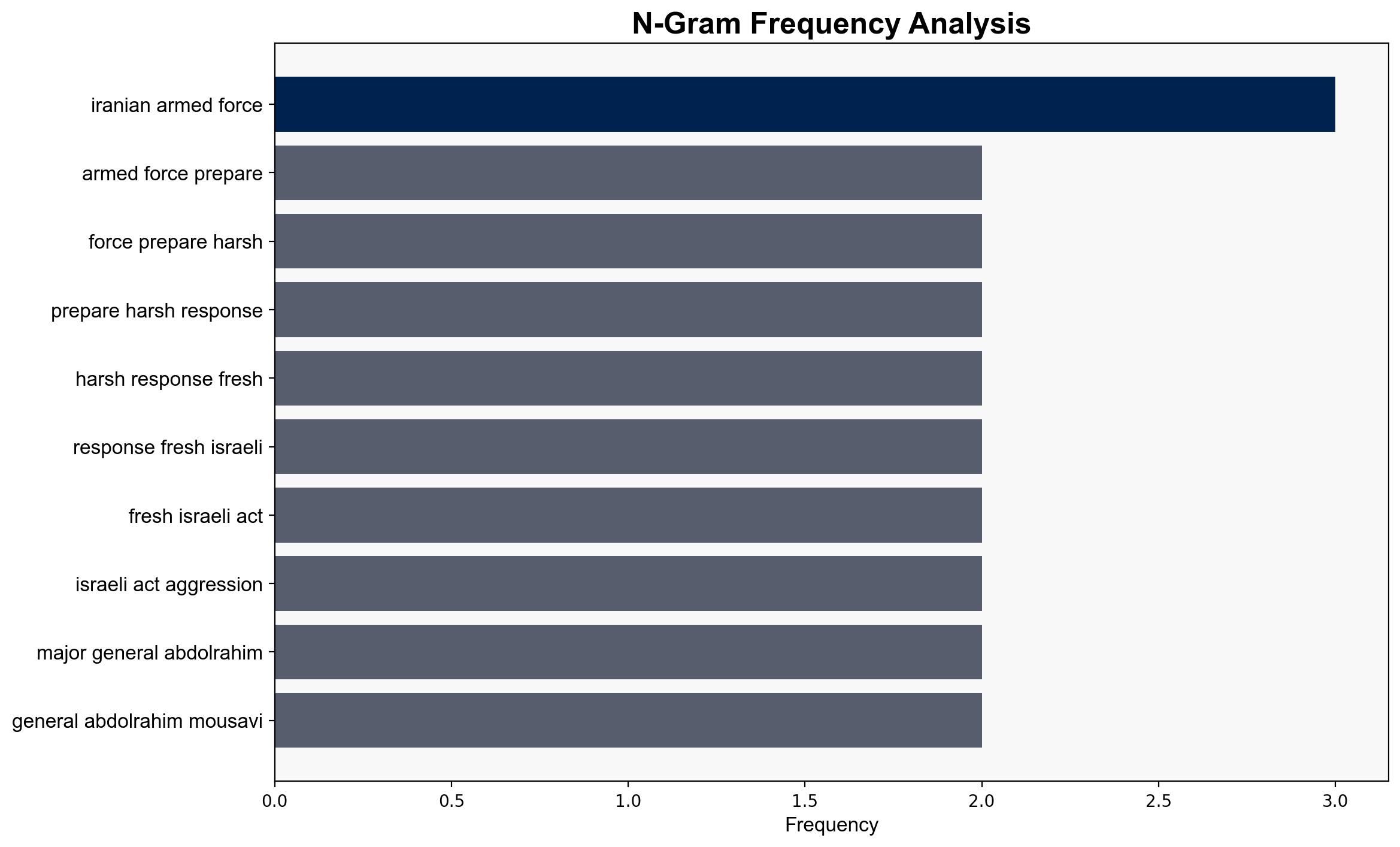Iran Issues New Threat to US – Newsweek
Published on: 2025-08-13
Intelligence Report: Iran Issues New Threat to US – Newsweek
1. BLUF (Bottom Line Up Front)
The most supported hypothesis is that Iran’s recent threats are primarily a strategic deterrence measure aimed at preventing further Israeli attacks and reinforcing regional alliances. Confidence level: Moderate. Recommended action: Enhance diplomatic engagement with regional partners to de-escalate tensions and monitor military movements closely.
2. Competing Hypotheses
Hypothesis 1: Iran’s threats are a strategic deterrence to prevent future Israeli attacks and strengthen alliances with nations like South Africa. This is supported by Iran’s emphasis on military readiness and alignment with South Africa against perceived global arrogance.
Hypothesis 2: Iran’s threats are a precursor to a planned escalation in military actions against Israel and potentially the US, using the rhetoric as a justification for future aggression. This is suggested by the historical pattern of missile exchanges and Iran’s firm military posture.
3. Key Assumptions and Red Flags
– Assumption: Iran’s rhetoric is primarily defensive and not indicative of an imminent offensive. This could be a cognitive bias underestimating Iran’s willingness to escalate.
– Red Flag: Lack of direct comments from the US State Department and Iran’s Foreign Ministry, which could indicate strategic ambiguity or internal disagreement.
– Inconsistent Data: The report mentions both limited and heavy casualties, which requires clarification.
4. Implications and Strategic Risks
– Economic: Potential disruptions in global energy markets if tensions escalate, affecting oil prices.
– Geopolitical: Increased regional instability could draw in global powers, complicating international diplomatic efforts.
– Cyber: Heightened risk of cyber-attacks as a form of asymmetric warfare.
– Psychological: Elevated regional tensions could lead to increased public fear and unrest.
5. Recommendations and Outlook
- Enhance intelligence-sharing with regional allies to monitor military movements and prevent miscalculations.
- Engage in diplomatic dialogues with Iran and Israel to de-escalate tensions and establish communication channels.
- Scenario Projections:
- Best Case: Successful diplomatic engagement leads to de-escalation and reduced military posturing.
- Worst Case: Misinterpretation of military actions leads to a broader conflict involving multiple regional actors.
- Most Likely: Continued rhetorical exchanges with sporadic military skirmishes, maintaining a high-tension status quo.
6. Key Individuals and Entities
– Major General Abdolrahim Mousavi
– General Rudzani Maphwanya
– Donald Trump
7. Thematic Tags
national security threats, cybersecurity, counter-terrorism, regional focus




